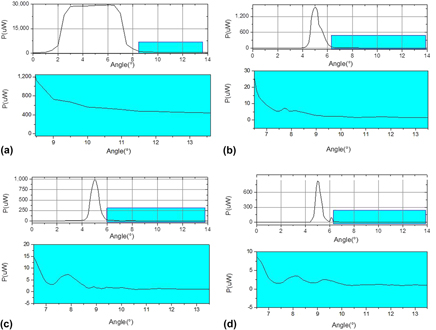Article contents
An optical dustbin made by the subwavelength-induced super-black carbon aerogels
Published online by Cambridge University Press: 05 September 2017
Abstract

Super-black carbon aerogel sleeves (CAS) with different reflectivities and a clear aperture had been made, by the sol–gel polycondensation of resorcinol (R) and formaldehyde (F) under the catalysis of sodium carbonate (C), and was used to eliminate stray light. We explained that the subwavelength structure is the main factor that leads to the low reflectivity of CA and constructed a simple optical system to measure the exit power from CAS in different directions. We proved that different CASs have different matting effects, and all of these CASs have better matting effects than that of monolithic graphite that has higher reflectivity. To show the fine angular resolution ability of CAS, we measured the faculae from the reflected light of a compact disc and found that the CAS with a clear aperture of 1.0 mm is the best. The super-black CAS could be used in precision optical instruments and to eliminate stray light in the optical.
- Type
- Invited Paper
- Information
- Copyright
- Copyright © Materials Research Society 2017
Footnotes
Contributing Editor: Winston V. Schoenfeld
References
REFERENCES
- 10
- Cited by





